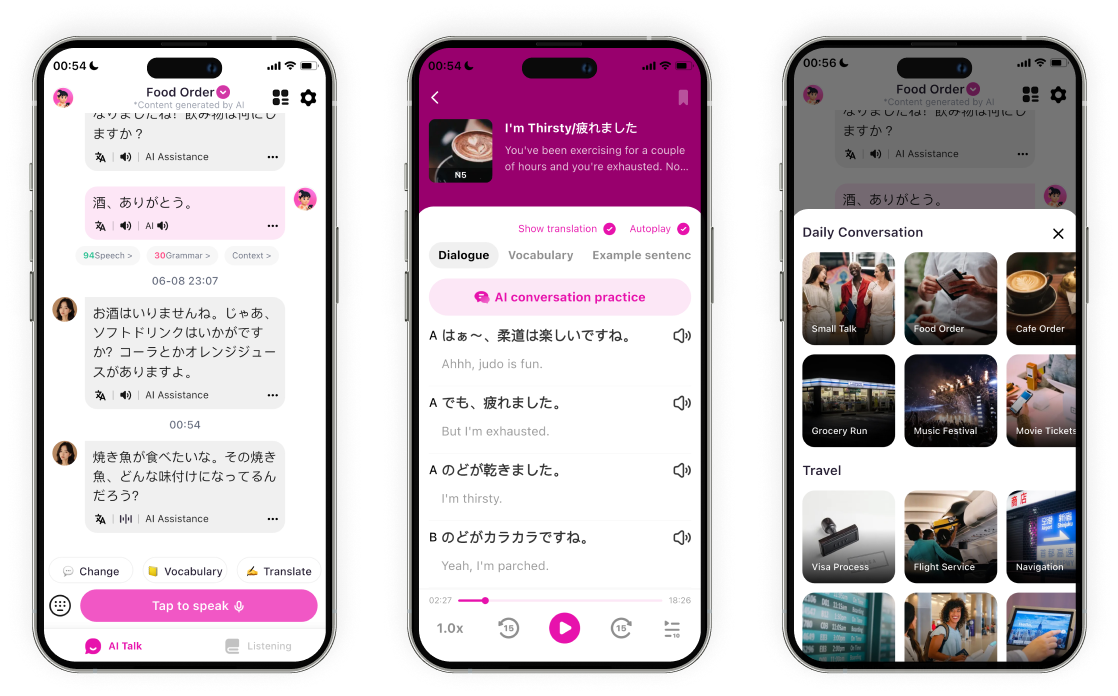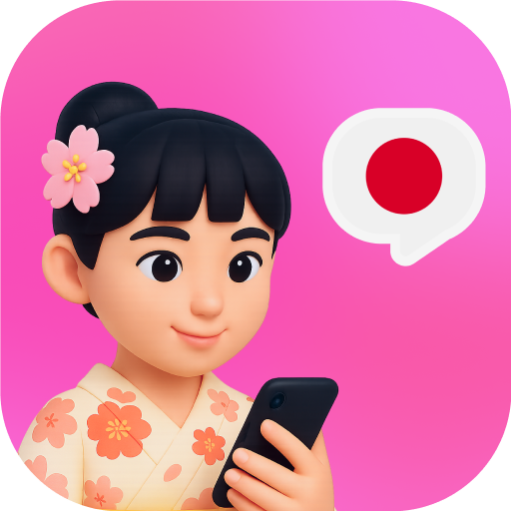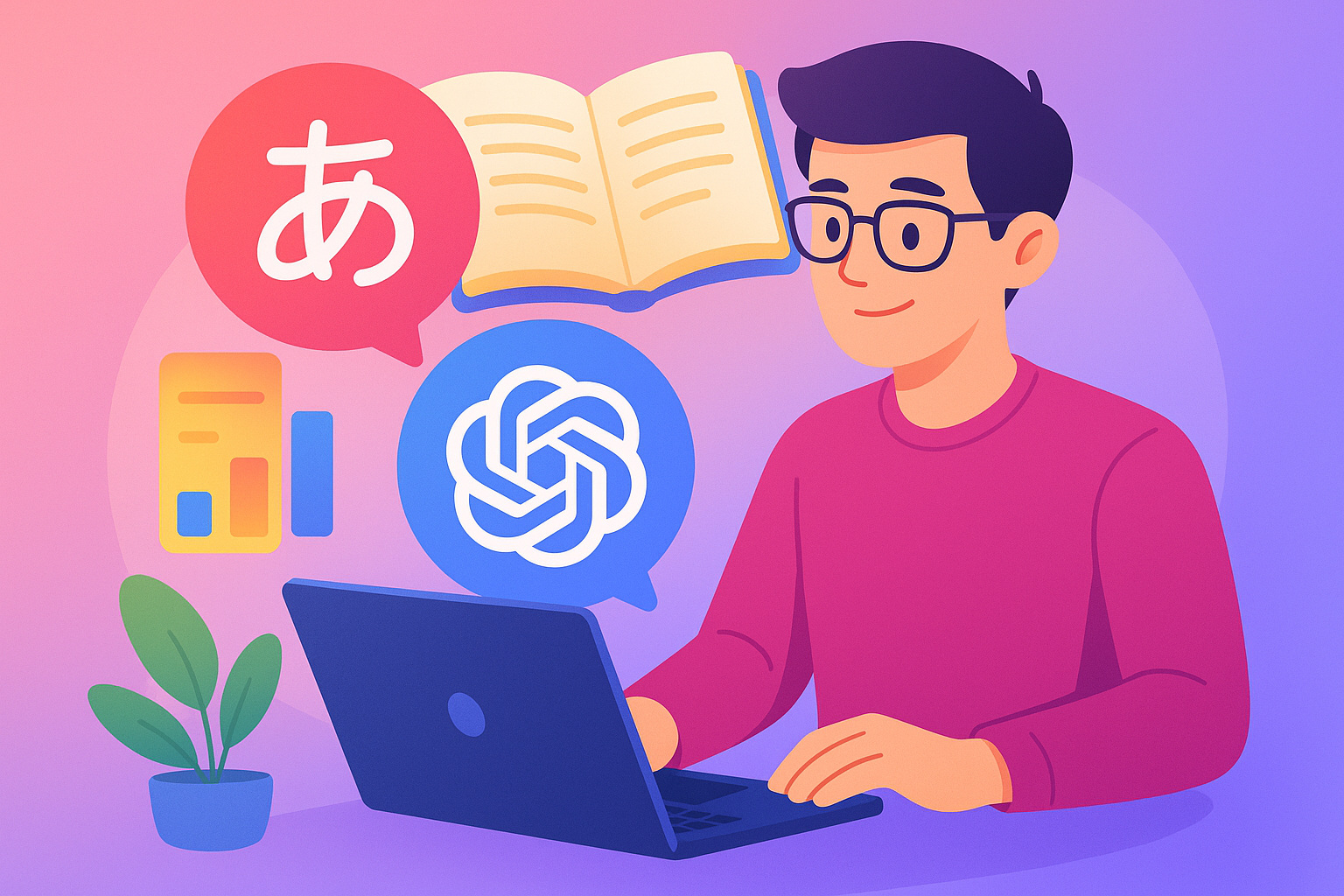If you’ve ever wondered whether ChatGPT can actually help you learn Japanese, the short answer is yes. But how you use it makes all the difference. We’ll explore how to get started, what ChatGPT is great at, where it falls short, and how a specialized tool like Japanese Ai might better serve certain learners.
Getting Started: Using ChatGPT as Your Japanese Language Partner
ChatGPT can be a surprisingly helpful companion for studying Japanese, especially if you know how to guide it. It’s flexible, always available, and can adapt to your goals. Here’s how to use it effectively from the start:
1. Choose a Goal That’s Clear (Even If It’s Small)
Before you jump into practice, decide what you want to focus on. Are you building basic vocabulary? Trying to get a handle on particles like は vs. が? Or maybe preparing for a trip to Japan? Setting a focus will help you shape your prompts.
2. Prime ChatGPT with a Teaching Persona
Give ChatGPT instructions so it knows how to respond to you. This “prompt” sets the tone for your learning experience. A few examples:
Beginner, general plan:
You are a friendly Japanese tutor named Yuki from Kyoto. You’re excited to help people learn Japanese. I’m a total beginner. Please design a 4-week learning plan (30 minutes a day, 5 days a week). Include a curriculum with daily topics, vocabulary, and grammar goals in a table format. Give me feedback as I complete lessons.
Intermediate, situational (travel):
You’re a native Japanese tutor named Hiro from Tokyo. I’m traveling to Japan soon and want to practice useful phrases for going to restaurants, night clubs, and shopping. Create a 1-week lesson plan focused on role-play in those situations. Use mock dialogues, and correct my grammar without pausing the conversation.
Intermediate, situational (romantic interest):
You’re an encouraging tutor from Fukuoka named Aiko. I’ve met someone I like from Japan, and I want to learn how to talk about interests and hobbies. Start by teaching me 3 new words through multiple choice, then move to a short conversation. Be sure to include lessons on how to express interest in someone in a romantic way in Japan. Correct my mistakes as we go.
3. Let the Practice Begin
Once you’ve sent your prompt, ChatGPT will take over as your AI tutor. It will guide you through your lessons, respond to your answers, and offer corrections—all without judgment.
You can also use ChatGPT for tasks like:
- Writing short paragraphs or journal entries in Japanese
- Getting feedback on grammar or structure
- Translating English sentences into natural Japanese (or vice versa)
Even spending 10–15 minutes daily with the AI can yield real results. Save new words and corrected phrases in a doc or notebook so you can review and reinforce over time.
Ways to Deepen Your Japanese Practice with ChatGPT
Once you’re comfortable with the basics, here are smart ways to level up your learning:
🧠 Vocabulary Practice
Ask for word lists on specific topics, such as travel, feelings, seasons, or slang. Then ask for sample sentences or make your own and ask for corrections.
Example prompt: “Give me 10 useful Japanese verbs for everyday life, and use them in example sentences.”
🧹 Grammar Help
Confused by て-form, passive verbs, or the difference between に and で? ChatGPT can explain grammar points, show examples, and quiz you.
Prompt idea: “Explain the difference between は and が with side-by-side comparisons and a short quiz.”
🎭 Real-World Roleplay
Practice situations like checking into a hotel or asking someone out for coffee. ChatGPT can simulate dialogues so you’re not caught off guard in real life.
📚 Reading & Listening
Ask for short passages or news summaries in Japanese. Read them, then request comprehension questions. You can also paste the text into a text-to-speech tool for listening practice.
✍️ Writing Practice
Use ChatGPT as a personal editor for your writing. Try a short email, tweet, or journal entry, then ask for feedback to make it more natural.
⚠️ Error Correction
One of ChatGPT’s best features: instant correction. Just say, “Please point out and explain any mistakes in my message,” and you’ll get a detailed response.
🎲 Custom Games and Quizzes
Keep things fun by asking for kanji quizzes, word games, or sentence completion challenges. You can even ask ChatGPT to play しりとり (a Japanese word-chain game).
Tips for Smarter ChatGPT Learning
- Set difficulty levels: Ask ChatGPT to speak to you using only N5-level grammar, or to gradually increase the complexity of its responses.
- Use bilingual mode: Ask for Japanese text with English explanations when learning new grammar.
- Review mistakes regularly: Save ChatGPT’s corrections and revisit them weekly.
- Ask about culture: Use ChatGPT to explore etiquette, festivals, and idioms—it’s an easy way to make your learning more contextual and human.
Where ChatGPT Falls Short
Despite how helpful it is, ChatGPT does have limitations:
- No Pronunciation Feedback: Despite having a realtime voice call mode, ChatGPT is not trained to correct your pronunciation. So you’ll need other tools (or people) for practicing pitch accent and proper intonation.
- Sometimes Inaccurate: Though rare, it might give you unnatural translations or grammar. Use a second source if you’re unsure.
- Not Structured: You have to design your own learning flow. That works for some—but others may find it overwhelming or inconsistent.
Japanese Ai: A Smarter Alternative for Structured Learning
If you’d prefer something more organized, Japanese Ai might be a better fit. This AI-powered platform is purpose-built to teach Japanese and comes with everything ready to go. No prompt writing required.
What Japanese Ai offers:
- Guided Lessons: Built-in curriculum from beginner to advanced levels
- Listening Practice: Interactive, recorded audio for pronunciation and listening
- Smart Feedback: Instant corrections on grammar, usage, and tone
- Gamified Progress: Points, levels, and achievements to stay motivated
- Visual Progress Tracking: Easily see how far you’ve come and where to improve
It combines the adaptability of AI with the structure of a language course—ideal for learners who want a clear path and variety of practice types.

ChatGPT vs. Japanese Ai: Which One Should You Use?
| ChatGPT | Japanese Ai | |
|---|---|---|
| Setup | Yes – you need to write prompts | No – just start chatting |
| Custom Conversations | ✅ Very flexible | ➖ Predefined topics with flexible paths to take |
| Structured Curriculum | ❌ You create your own path | ✅ Full course included |
| Listening Practice | ➖ Listening to AI tutor (unnatural voice) | ✅ Professional audio lessons |
| Speaking Practice | ✅ Converse with AI | ✅ Converse with AI |
| Pronunciation Assessments | ❌ None | ✅ Detailed assessments |
| Grammar & Writing Feedback | ✅ Good for corrections | ✅ Detailed and contextual |
| Fun & Motivation | ❌ Manual | ✅ Gamified with streaks and points |
Tip: You don’t have to choose just one. You may find ChatGPT useful for exploratory conversation and improvisation, and Japanese Ai for focused, structured progress.
Final Thoughts: Pick What Works for You
Whether you’re chatting casually with ChatGPT or leveling up with Japanese Ai, the most important part is sticking with it. Learning Japanese is a long journey. However, it’s never been more accessible or more personalized with today’s tools.
Be consistent, stay curious, and enjoy the process. With the right tools and attitude, fluency is within reach.
がんばって!(Ganbatte!)

